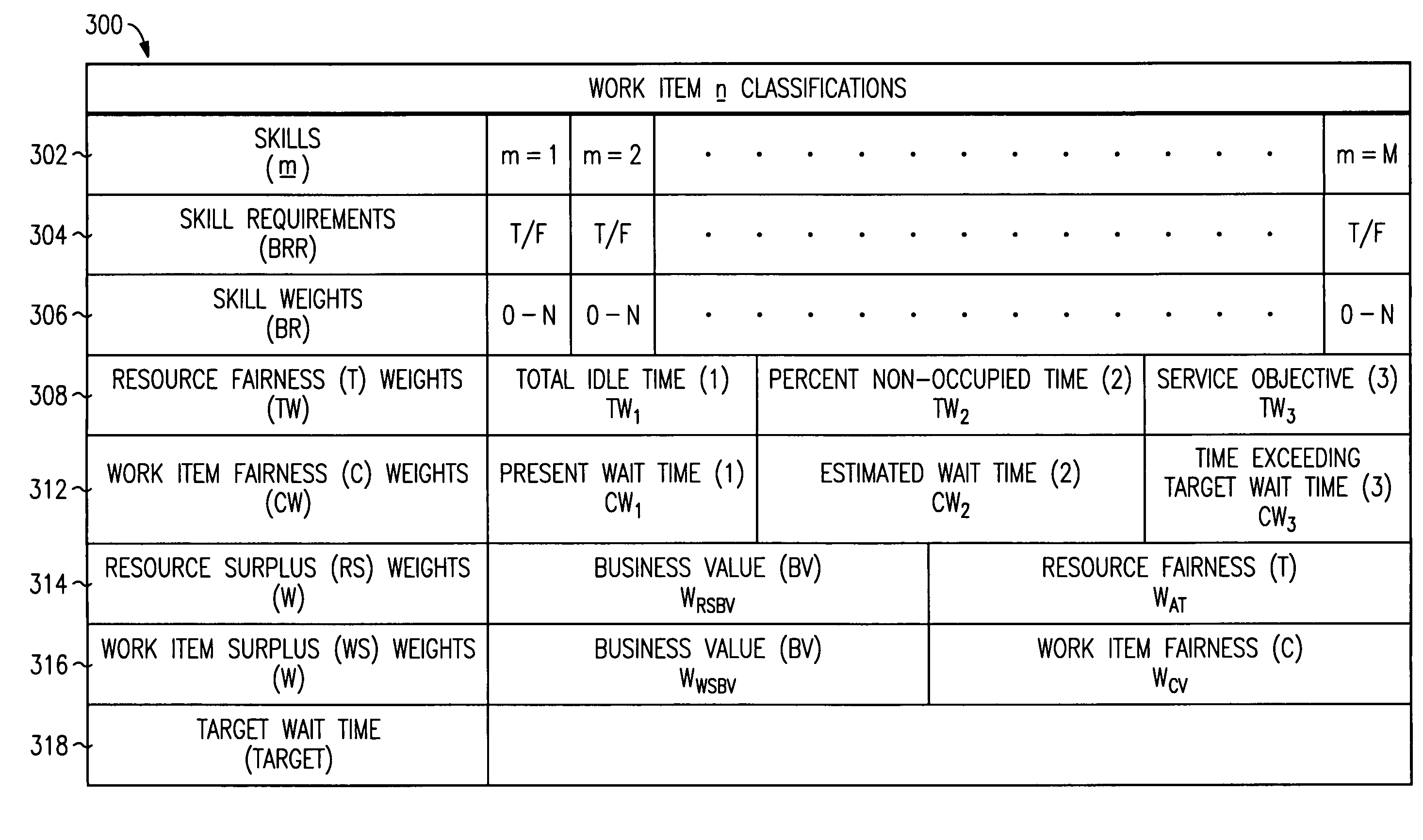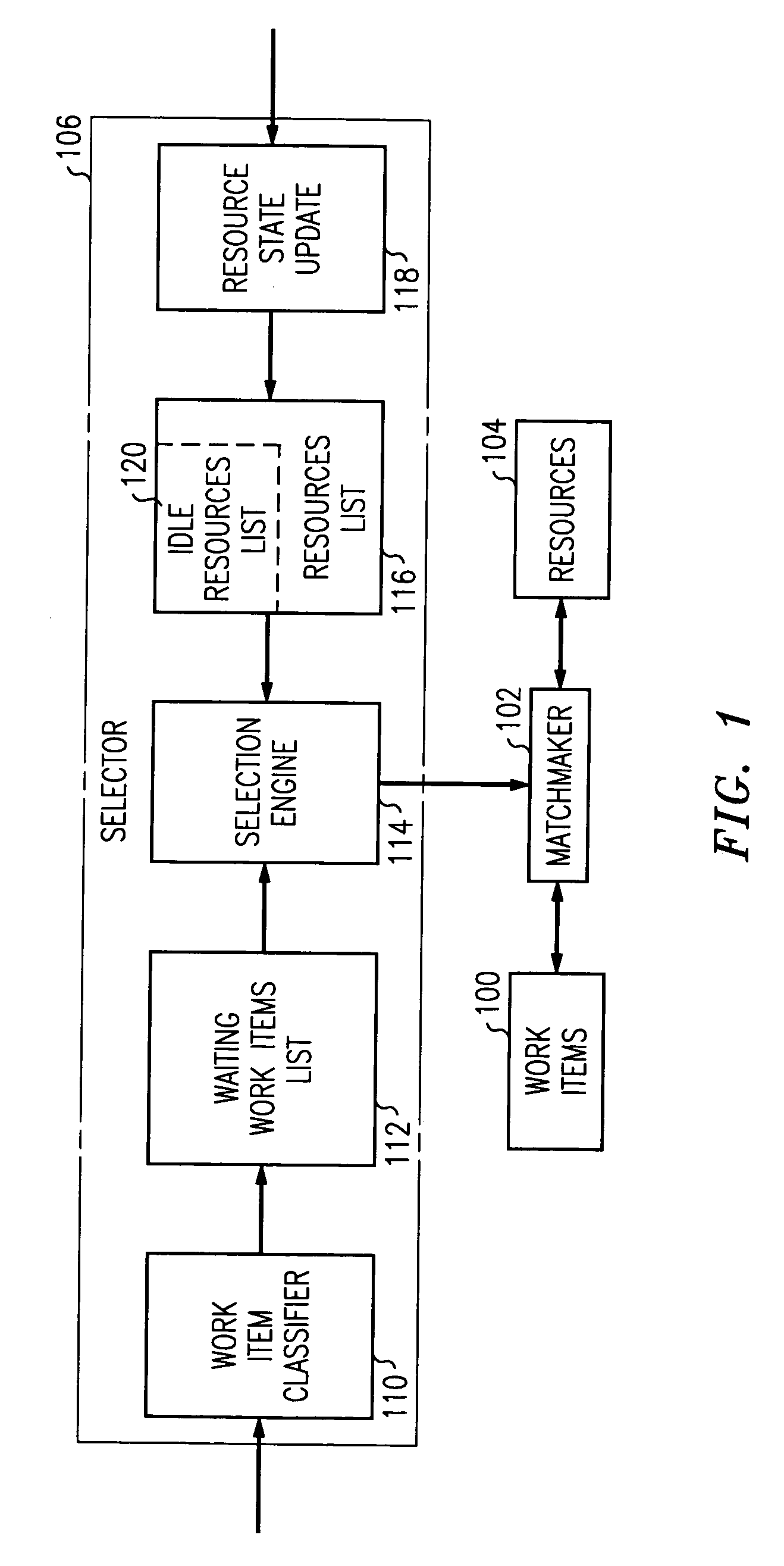Arrangement for resource and work-item selection
- Summary
- Abstract
- Description
- Claims
- Application Information
AI Technical Summary
Benefits of technology
Problems solved by technology
Method used
Image
Examples
Embodiment Construction
1. The Environment
[0024]FIG. 1 shows an illustrative work processing system that comprises work items 100 waiting to be processed, resources 104 that process work items 100, a match-maker 102 that assigns individual work items 100 to individual resources 104 for processing, and a selection arrangement (SELECTOR) 106 that controls match-maker 102 and determines which work item 100 should be assigned to which resource 104. By way of one example, the processing system may be a call center wherein work items 100 comprise waiting communications, resources 104 comprise agents and interactive response systems, match-maker 102 comprises an automatic communications distributor (ACD), and selection arrangement 106 comprises either an adjunct processor to the ACD or a control program residing in memory of the ACD and executing on a processor of the ACD. As described so far, the work processing system of FIG. 1 is conventional.
2. Selection Arrangement Algorithm
[0025]The goal of selection arrang...
PUM
 Login to View More
Login to View More Abstract
Description
Claims
Application Information
 Login to View More
Login to View More - R&D
- Intellectual Property
- Life Sciences
- Materials
- Tech Scout
- Unparalleled Data Quality
- Higher Quality Content
- 60% Fewer Hallucinations
Browse by: Latest US Patents, China's latest patents, Technical Efficacy Thesaurus, Application Domain, Technology Topic, Popular Technical Reports.
© 2025 PatSnap. All rights reserved.Legal|Privacy policy|Modern Slavery Act Transparency Statement|Sitemap|About US| Contact US: help@patsnap.com



